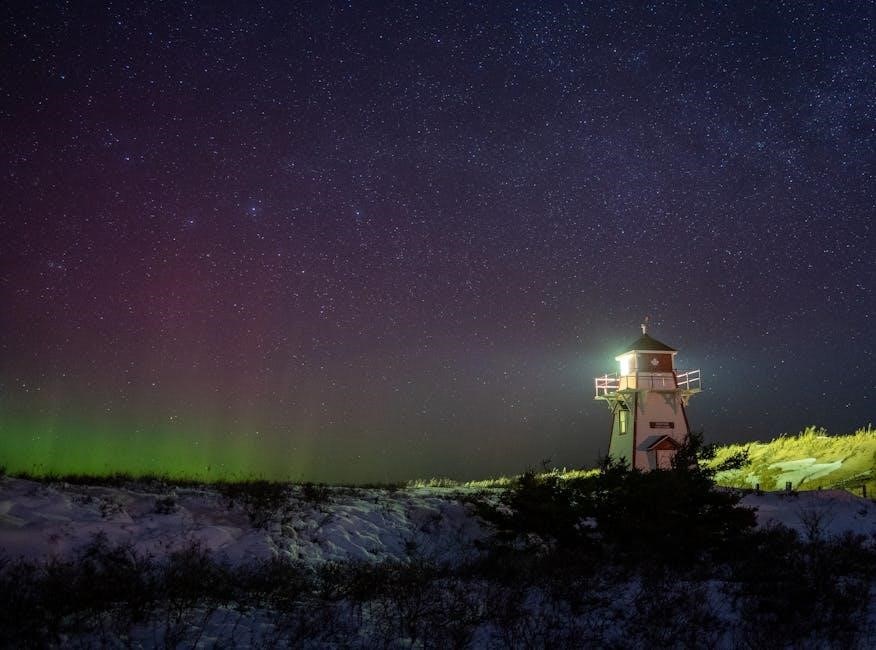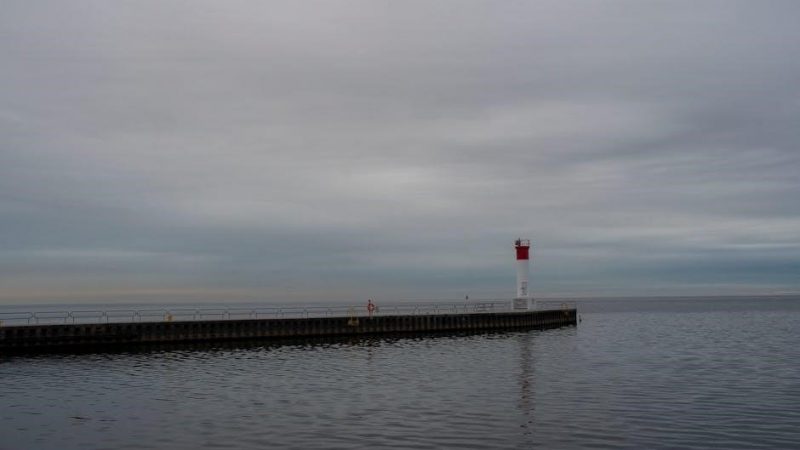olympia guide

Olympia, nestled in western Peloponnese, Greece, is a legendary archaeological site and birthplace of the ancient Olympic Games. This sacred destination, dedicated to Zeus, inspired modern global sporting events.
Overview of Olympia’s Historical Significance
Olympia, in western Peloponnese, Greece, holds immense historical significance as the birthplace of the ancient Olympic Games, a cornerstone of Greek culture and identity. Established in 776 BC, the site served as a religious and athletic hub, honoring Zeus and fostering unity among Greek city-states. The Games, held every four years, promoted peace and competition, leaving a lasting legacy. Olympia’s ruins, including the Temple of Zeus, reflect its grandeur and spiritual importance. Today, it remains a symbol of ancient Greece’s cultural and religious heritage, attracting global interest and inspiring modern Olympic traditions.
The Birthplace of the Olympic Games
Olympia is renowned as the birthplace of the ancient Olympic Games, a tradition that began in 776 BC and continued for over a millennium. The site was chosen for its natural beauty and sacred association with Zeus, the king of the gods. The Games were a celebration of athleticism, unity, and peace, with the Olympic Truce ensuring conflict cessation during the events. Olympia’s stadium and surrounding structures were specifically designed to host these prestigious competitions, which became a cornerstone of Greek culture. The legacy of this sacred place endures, inspiring the modern Olympic Games and symbolizing the timeless pursuit of excellence and harmony.

History of the Ancient Olympic Games
The ancient Olympic Games began in 776 BC and continued until 393 AD, held every four years in honor of Zeus, uniting Greek city-states in athletic and cultural celebration.
Origins and Evolution of the Games
The ancient Olympic Games originated in 776 BC in Olympia, Greece, as a religious festival honoring Zeus. Initially, the games featured simple events like running, with participants competing naked, a tradition called “gymnos.” Over time, the games evolved, incorporating wrestling, boxing, and chariot racing, reflecting the cultural and athletic advancements of the Greek civilization. The Olympics became a unifying event for Greek city-states, fostering peace through the Olympic Truce. As the Roman Empire rose, the games declined but were later revived in modern times, preserving their legacy as a symbol of global unity and athletic excellence.
The Olympic Truce and Its Importance
The Olympic Truce was a sacred agreement among Greek city-states to cease all hostilities during the Games. This tradition, known as Ekecheiria, ensured safe passage for athletes and spectators to Olympia. The truce was enforced by the Olympic authorities and held deep religious significance, as it honored Zeus and promoted unity. Its importance lay in fostering peace and solidarity among often-warring states, allowing them to come together in a spirit of competition and camaraderie. The truce also highlighted the Games’ role as a unifying force in ancient Greece. This concept has been revived in modern times, symbolizing the enduring ideals of peace and cooperation that the Olympics represent.
The Decline and Revival of the Games
The ancient Olympic Games flourished for over a millennium but declined under Roman rule, as their original spirit faded amid political and religious changes. In 393 AD, Emperor Theodosius banned the Games, deeming them pagan. The site of Olympia fell into disrepair, buried by earthquakes and floods. Centuries later, in 1896, Pierre de Coubertin revived the Games in Athens, drawing inspiration from Olympia’s legacy. This revival reignited global interest in Olympia, leading to archaeological excavations and the site’s recognition as a cultural treasure; Today, Olympia stands as a symbol of ancient heritage and the enduring spirit of athletic competition and international unity.

Archaeological Site of Olympia
Olympia, a UNESCO World Heritage site, features ancient ruins, temples, and artifacts, showcasing its historical and religious significance as the birthplace of the Olympic Games.
The Temple of Zeus
The Temple of Zeus at Olympia was one of the Seven Wonders of the Ancient World, showcasing the grandeur of ancient Greek architecture; Constructed between 470 and 456 BC, it housed the magnificent statue of Zeus, crafted by Phidias, which was considered a marvel of art. The temple featured 6 columns on each end and 15 on the longer sides, reflecting Doric design. Its ruins today highlight the scale and precision of its construction. The temple’s remains are a testament to Olympia’s religious and cultural significance, as it was both a place of worship and a symbol of Greek civilization.
The Olympic Stadium
The Olympic Stadium was the heart of the ancient Olympic Games, hosting running and other athletic events. Built in a natural valley, it could accommodate up to 40,000 spectators. The stadium’s rectangular design featured a 200-meter track, with stone benches for officials and a sacred olive tree near the finish line. This tree was said to have been planted by Hercules, adding to the site’s mythological significance. Today, the stadium’s ruins offer a glimpse into its former glory, allowing visitors to imagine the roar of ancient crowds cheering on athletes. Its well-preserved remains make it one of Olympia’s most iconic and historically rich attractions.
Other Notable Ruins and Structures
Beyond the Temple of Zeus and the Olympic Stadium, Olympia boasts several other remarkable ruins. The Altis, a sacred grove dedicated to Zeus, features the remains of various temples and altars. The Prytaneion, a public building, once housed the sacred flame of Zeus and served as a dining hall for officials. The Bouleuterion, or council chamber, was where the Olympic Council convened. The Leonidaion, a luxurious hostel, accommodated distinguished visitors. Additionally, the Echo Stoa, a long colonnaded walkway, and the remains of the Gymnasion and Palaistra highlight Olympia’s architectural richness. These structures provide insight into the site’s religious, administrative, and cultural significance, showcasing its enduring legacy as a center of ancient Greek life and athletics.

The Museum of Olympia
The Museum of Olympia showcases artifacts from the ancient Olympic Games, preserving history and cultural heritage for visitors to explore and appreciate its significance.
Main Exhibits and Artifacts
The Museum of Olympia houses an impressive collection of artifacts uncovered from the ancient site, offering insights into its rich history. Key exhibits include sculptures, pottery, and inscriptions that highlight Olympia’s cultural and religious significance. The statue of Hermes by Praxiteles is a standout piece, showcasing exquisite ancient Greek artistry. Other artifacts, such as votive offerings and athletic equipment, provide a glimpse into the daily life and traditions of the ancient Olympic Games. These treasures not only preserve history but also educate visitors about the spiritual and competitive essence of Olympia, making the museum a vital part of the site’s heritage.
The History of the Museum
The Museum of Olympia was established to preserve and showcase the rich cultural and historical heritage of the ancient site. Founded in 1885, it has undergone several expansions and renovations, with a major overhaul in 1975 and a modernization in 2016. The museum houses artifacts discovered during excavations, providing a chronological journey through Olympia’s history. Its collections span from prehistoric times to the Roman era, highlighting the site’s religious and athletic significance. The museum’s evolution reflects the growing understanding of Olympia’s importance, making it a vital resource for scholars and visitors alike. It stands as a testament to the enduring legacy of this ancient wonder.
The Modern Olympic Games Connection
The Olympic flame is lit in Olympia, symbolizing the connection between ancient and modern games, embodying the spirit of unity and inspiration for global athletes.
The Lighting of the Olympic Flame
The Olympic flame is lit in Olympia during a solemn ceremony, symbolizing the connection between ancient and modern games. Using a parabolic mirror and sunlight, the flame is kindled, marking the start of the torch relay. This tradition, deeply rooted in history, represents peace and unity. The flame travels globally, carried by torchbearers to the host city, embodying the Olympic spirit. Olympia, as the birthplace of the Games, remains the spiritual home of this timeless tradition, bridging past and present.
The Torch Relay Tradition
The Olympic torch relay is a cherished tradition that begins in Olympia, where the flame is lit. This symbolic journey carries the flame from Greece to the host city of the modern Games. The relay embodies the Olympic spirit, fostering unity and peace among nations. Torchbearers, often selected for their achievements, carry the flame across diverse landscapes, sharing its light with millions. The relay culminates at the opening ceremony, where the flame ignites the Olympic cauldron, signaling the start of the Games. This tradition bridges ancient and modern, honoring Olympia’s legacy as the birthplace of the Olympics.

Visitor Information and Guide
Olympia, a timeless destination, invites visitors to explore its ancient ruins, museums, and sacred sites. Plan your visit to uncover the birthplace of the Olympic Games.
Planning Your Visit
Planning your visit to Olympia is essential for a seamless experience. The site is open year-round, with peak season from April to October. Arrive early to avoid crowds and explore the archaeological site and museum at a leisurely pace. Wear comfortable footwear, as walking on uneven terrain is necessary. Bring water, a hat, and sunscreen for outdoor exploration. Guided tours are recommended for deeper insights into the history and significance of the ruins. Check the official website for up-to-date ticket information and opening hours. Respect the site by following rules and preserving its ancient heritage. A well-planned visit ensures a memorable journey through Olympia’s timeless history.
Tickets and Opening Hours
Tickets for Olympia’s archaeological site and museum are reasonably priced, with general admission costing approximately €12. Reduced rates apply for students, seniors, and groups, while children under 18 enter free. Opening hours vary by season: from 8 AM to 8 PM in summer (April to October) and 8 AM to 5 PM in winter. It’s advisable to purchase tickets online in advance to avoid queues. Note that ticket prices may include access to both the site and the museum. Special events or holidays may alter operating hours, so check the official website before your visit. Planning your arrival early or late in the day can enhance your experience by avoiding crowds.
Guided Tours and Audio Guides
Exploring Olympia with a guided tour or audio guide enhances your understanding of its rich history. Licensed guides offer in-depth insights into the site’s archaeological significance, bringing ancient ruins to life. Tours are available in multiple languages, catering to diverse visitors. Audio guides provide flexibility for self-paced exploration, allowing you to absorb information at your own rhythm. Both options highlight key landmarks like the Temple of Zeus and the Olympic Stadium, offering historical context and fascinating anecdotes. Guided tours can be booked in advance or at the site, while audio guides are typically available at the ticket counter. These resources ensure a meaningful and educational experience, helping visitors appreciate Olympia’s enduring legacy.
Nearby Attractions and Accommodation
Olympia’s surrounding area offers a mix of historical charm and natural beauty. Visitors can explore nearby ancient sites, such as the Temple of Zeus and the Olympic Stadium, while also enjoying the scenic landscapes of the western Peloponnese. The nearby town provides a variety of accommodation options, ranging from budget-friendly guesthouses to luxury hotels. Many of these establishments are within walking distance of the archaeological site, making it convenient for tourists to explore. Additionally, the region is home to attractions like Kaiafas Lake and the Foloi Forest, offering opportunities for relaxation and outdoor activities. Booking accommodations in advance is recommended, especially during peak travel seasons, to ensure availability and proximity to Olympia’s main attractions.

Cultural and Spiritual Significance
Olympia holds profound cultural and spiritual significance as the birthplace of the Olympic Games, a symbol of unity and peace, and a major religious center dedicated to Zeus, leaving a lasting legacy in both athletics and faith.
Olympia as a Religious Center
Olympia was not only the birthplace of the Olympic Games but also a major religious center in ancient Greece, dedicated to the worship of Zeus. The site housed magnificent temples, including the iconic Temple of Zeus, which once held the towering statue of Zeus, one of the Seven Wonders of the Ancient World. Pilgrims from across Greece flocked to Olympia to honor Zeus, blending religious devotion with the celebration of athletic prowess. The Olympic Truce, a sacred agreement ensuring peace during the Games, further underscored Olympia’s spiritual significance, creating a harmonious blend of faith, athletics, and cultural unity.
The Legacy of the Olympic Games
The ancient Olympic Games left an enduring legacy, inspiring the modern Olympic movement revived in 1896. The Games promoted unity, peace, and fair competition, values that resonate globally today. Olympia’s heritage is celebrated through the lighting of the Olympic flame, a tradition that symbolizes the connection between ancient and modern Olympics. The torch relay, originating from Olympia, carries this symbolic fire to host cities worldwide, embodying the timeless spirit of athleticism and solidarity. The legacy of Olympia continues to inspire billions, fostering a shared identity and commitment to excellence, ensuring the Olympic ideals remain a cornerstone of global culture and aspiration.

Practical Tips for Exploring Olympia
Visit Olympia, Greece, the ancient Olympic Games’ birthplace. Wear comfortable shoes, bring water, and explore early to avoid crowds. Respect the site’s historical significance and consider guided tours for deeper insights.
Best Time to Visit
Olympia is best visited during spring (April–June) and autumn (September–October) when temperatures are mild, making exploration comfortable. Summer can be hot, while winters are cooler but less crowded. Plan your visit early in the morning or late afternoon to avoid peak sun and crowds. If attending the Olympic flame lighting ceremony, time your visit accordingly, as it typically occurs before major international Games. Avoid visiting during peak tourist season (July–August) for a more serene experience. Check local event calendars to coincide with cultural or historical celebrations, enhancing your visit to this ancient site.
What to Wear and Bring
When visiting Olympia, wear comfortable, breathable clothing suitable for walking. Sturdy footwear is essential for exploring the archaeological site’s uneven terrain. Bring a hat, sunglasses, and sunscreen to protect against the sun. Carry a reusable water bottle to stay hydrated, as the site can be vast. Snacks are also recommended, as dining options may be limited near the ruins. A lightweight backpack is ideal for carrying essentials like a camera, map, and extra clothing. Don’t forget a charged phone or camera to capture memories. Consider bringing a guidebook or renting an audio guide for deeper insights. Check the weather forecast and dress accordingly to ensure a pleasant visit.
Staying Safe and Respecting the Site
When exploring Olympia, prioritize safety and respect for the ancient site. Wear sturdy footwear to navigate uneven terrain and stay on designated paths to avoid accidents. Avoid touching or climbing on ruins, as they are fragile and protected. Refrain from littering and keep the site clean. Follow guidelines provided by staff or signs, and respect restricted areas. Do not remove any artifacts or plants, as this is illegal and harmful. Be mindful of the site’s historical significance and avoid vandalism. Protecting Olympia ensures its preservation for future generations. By being a responsible visitor, you contribute to the site’s conservation and enjoy a meaningful experience.
Olympia stands as a timeless symbol of history, spirituality, and athletic excellence. As the birthplace of the Olympic Games, it bridges ancient traditions with modern inspiration. The site’s ruins and museum offer a glimpse into a rich past, while the lighting of the Olympic flame connects it to the present. Visitors leave with a deeper appreciation for its cultural and historical significance. Olympia’s legacy endures, inspiring global unity and the pursuit of excellence. Whether exploring the archaeological wonders or reflecting on its spiritual essence, Olympia remains a must-visit destination for history enthusiasts and those seeking to understand the roots of the world’s most iconic sporting event.



